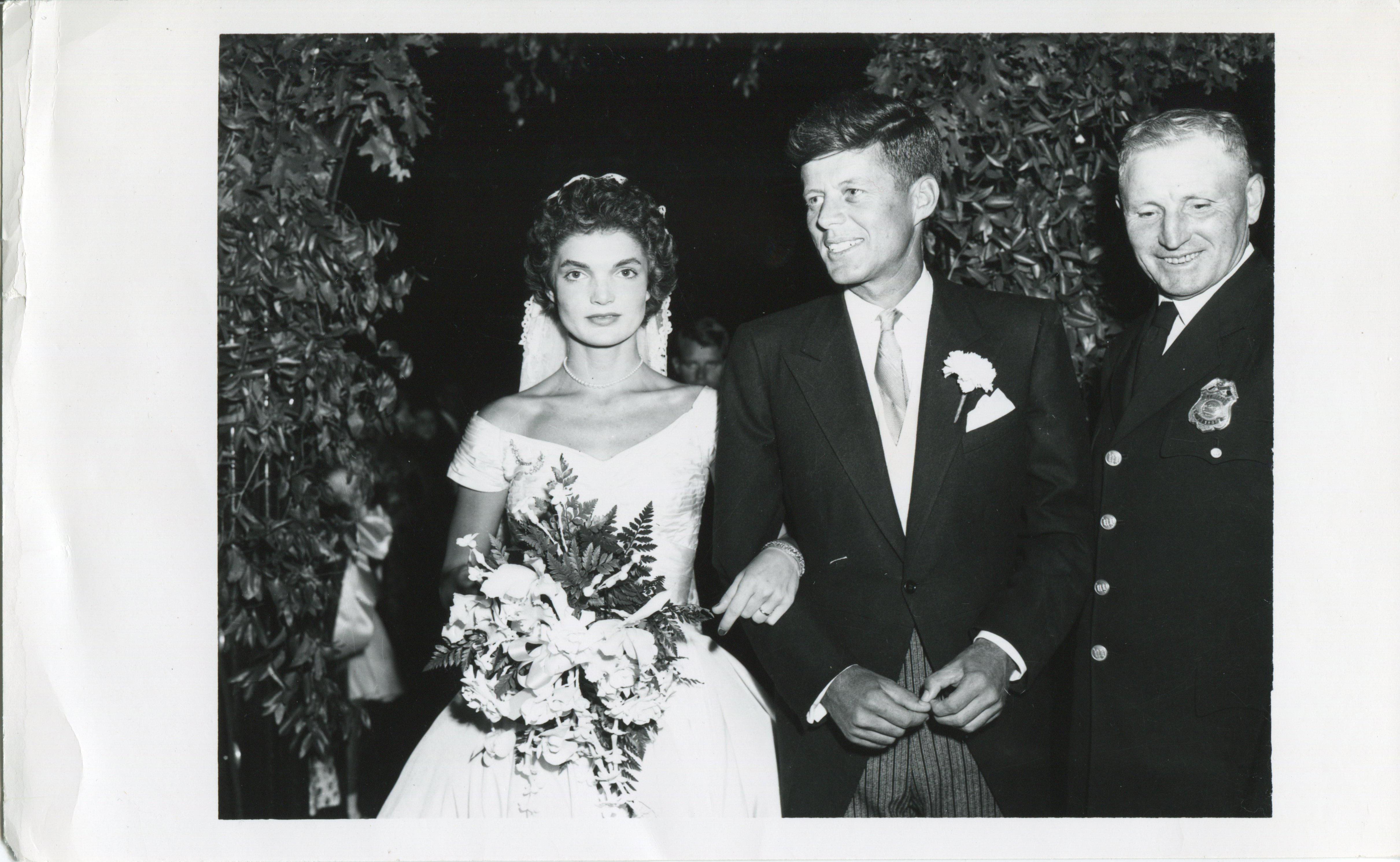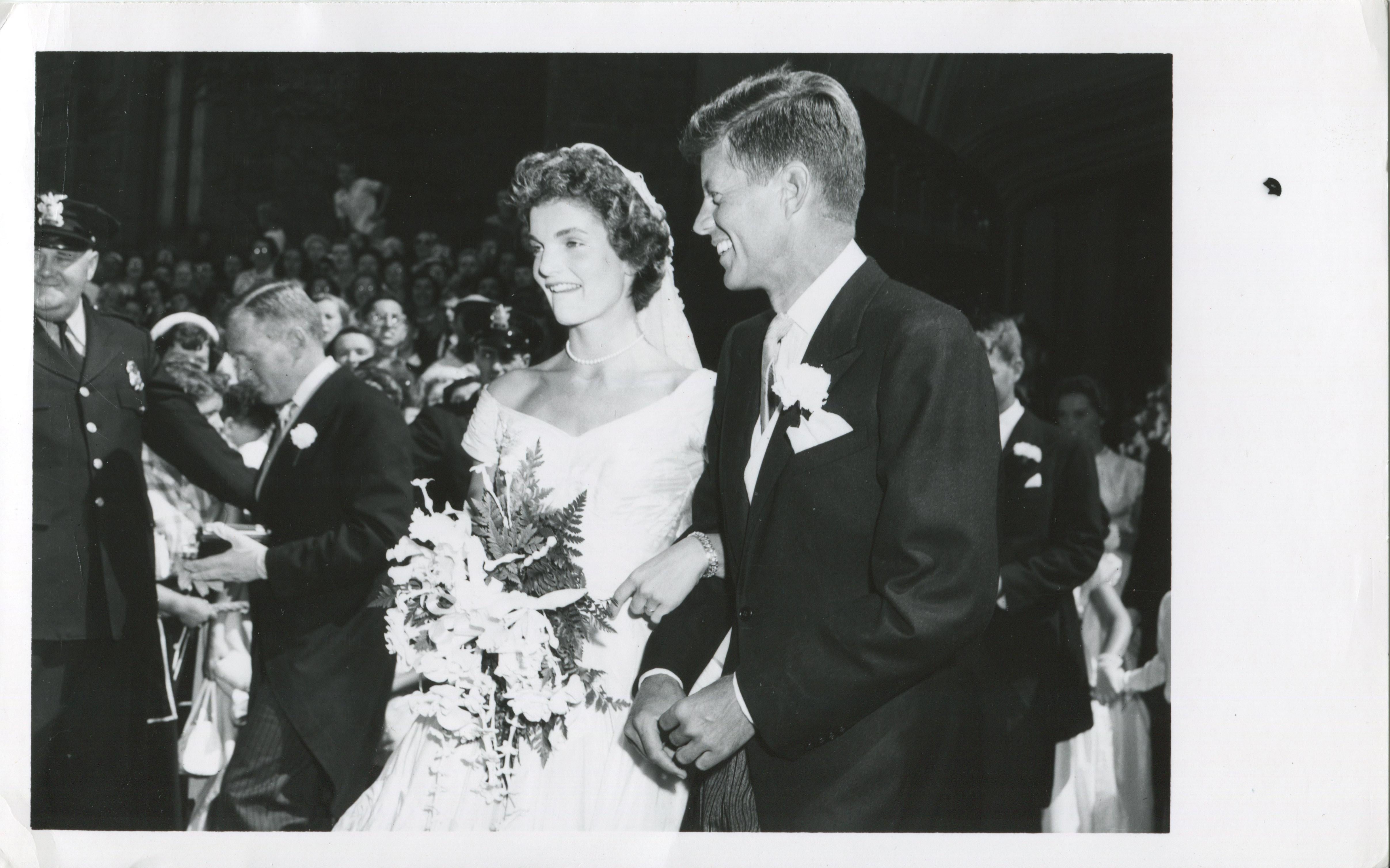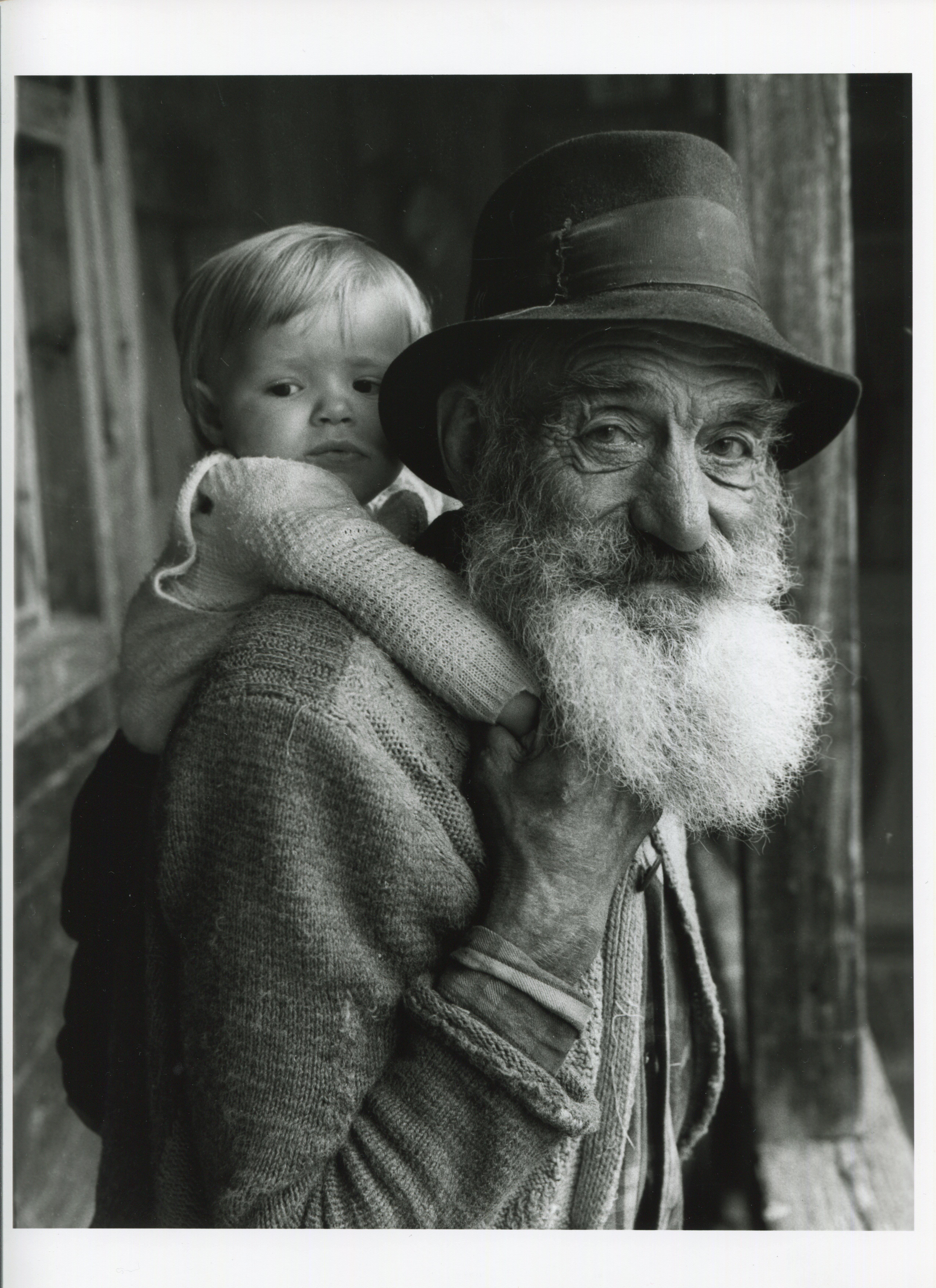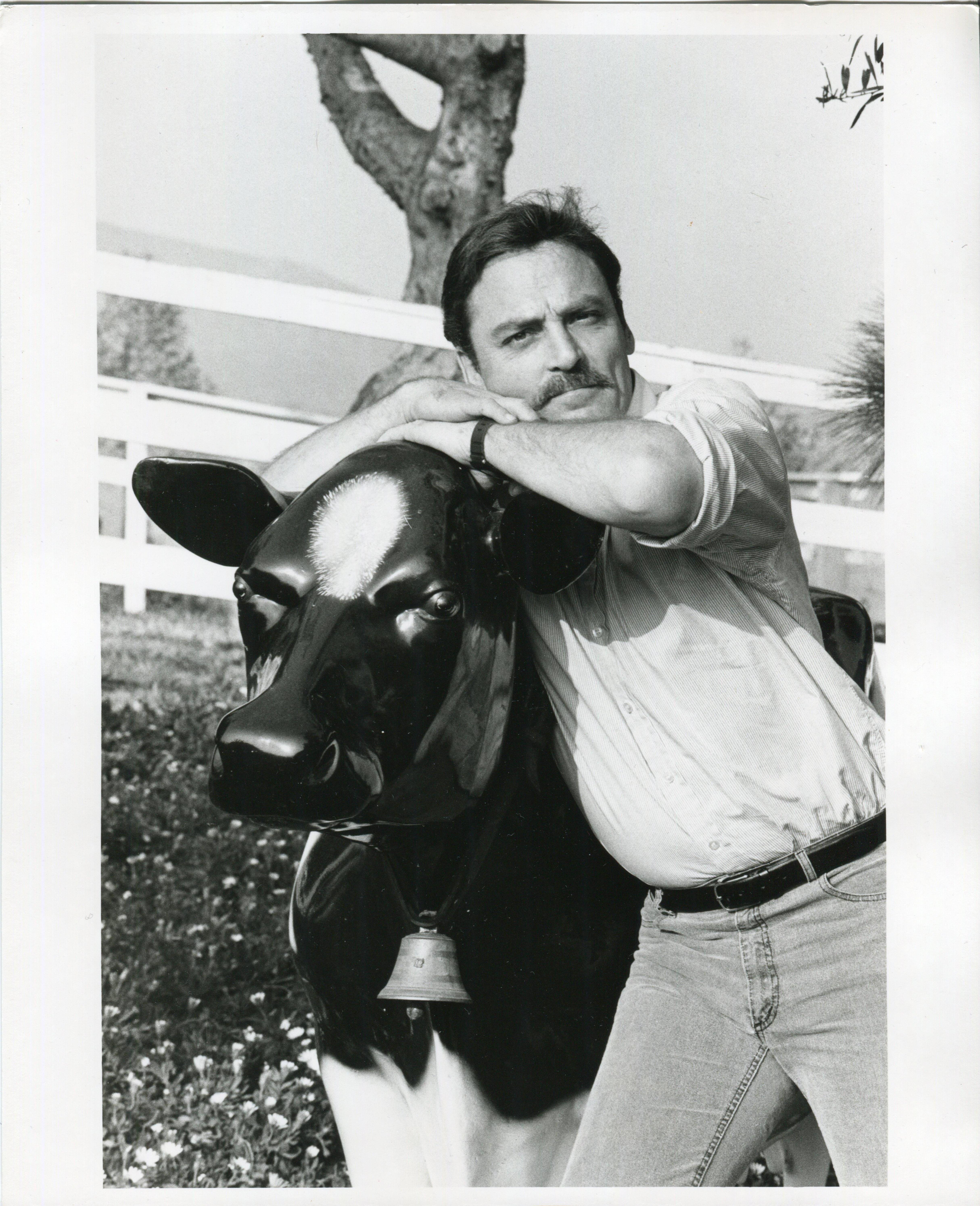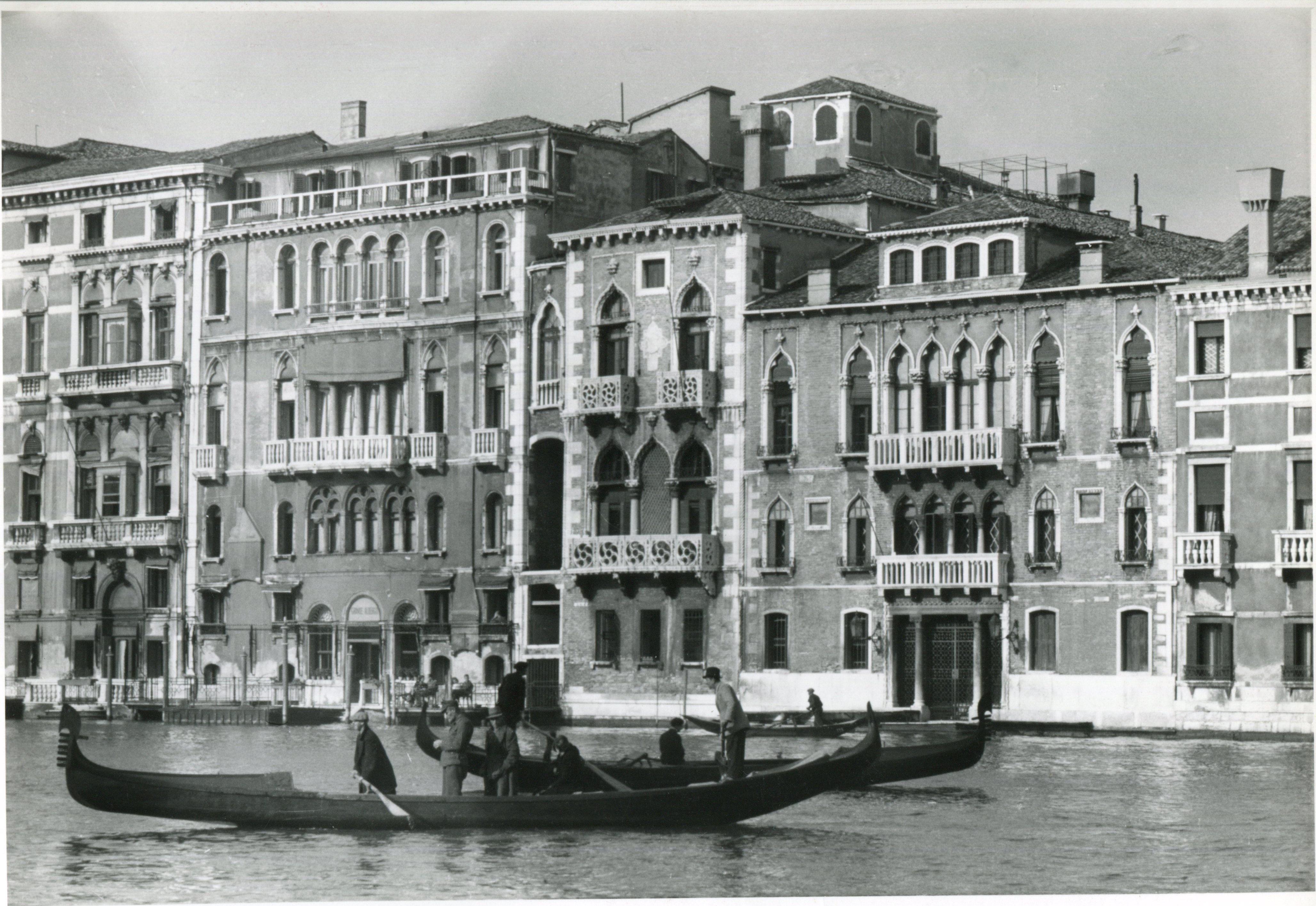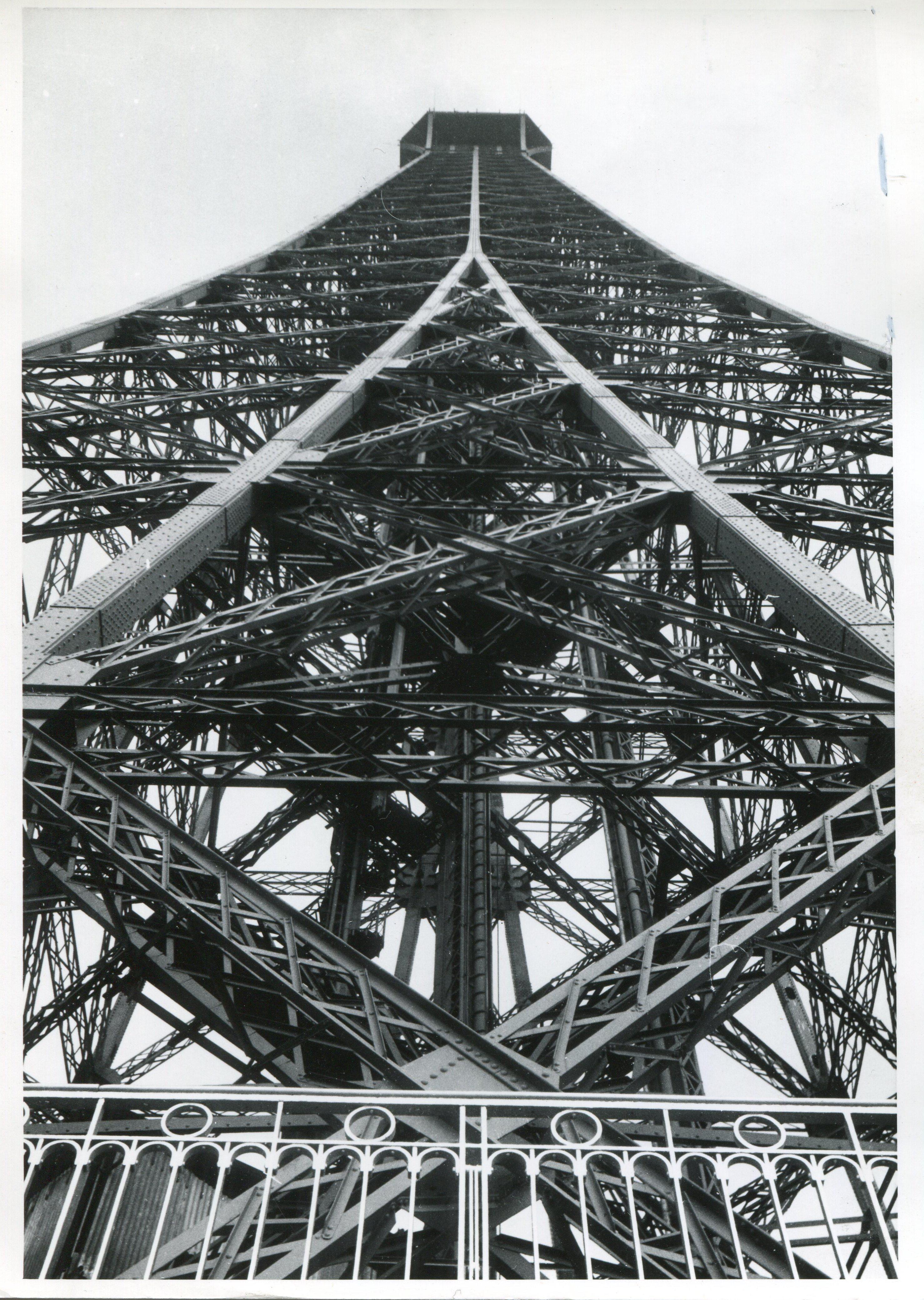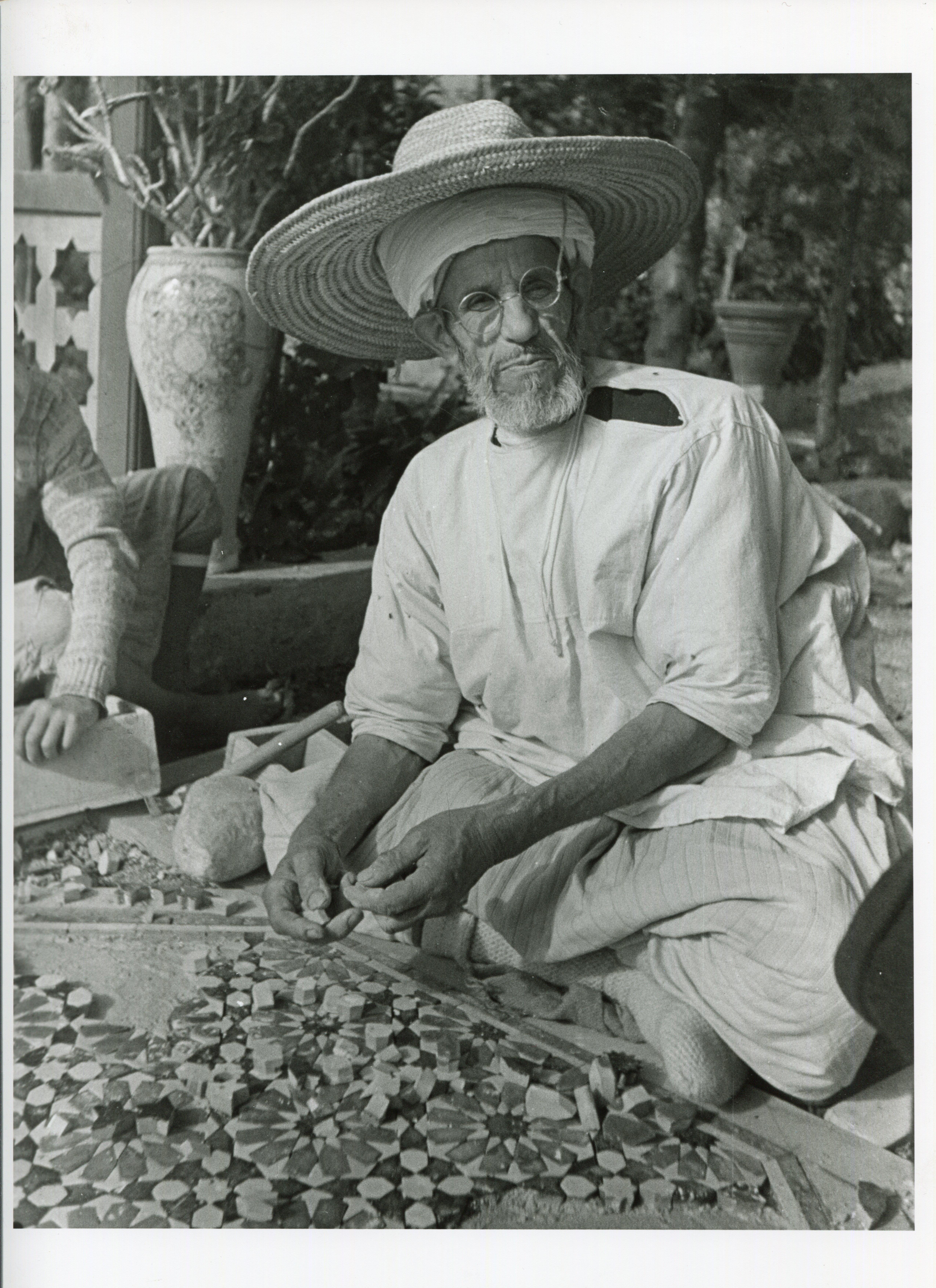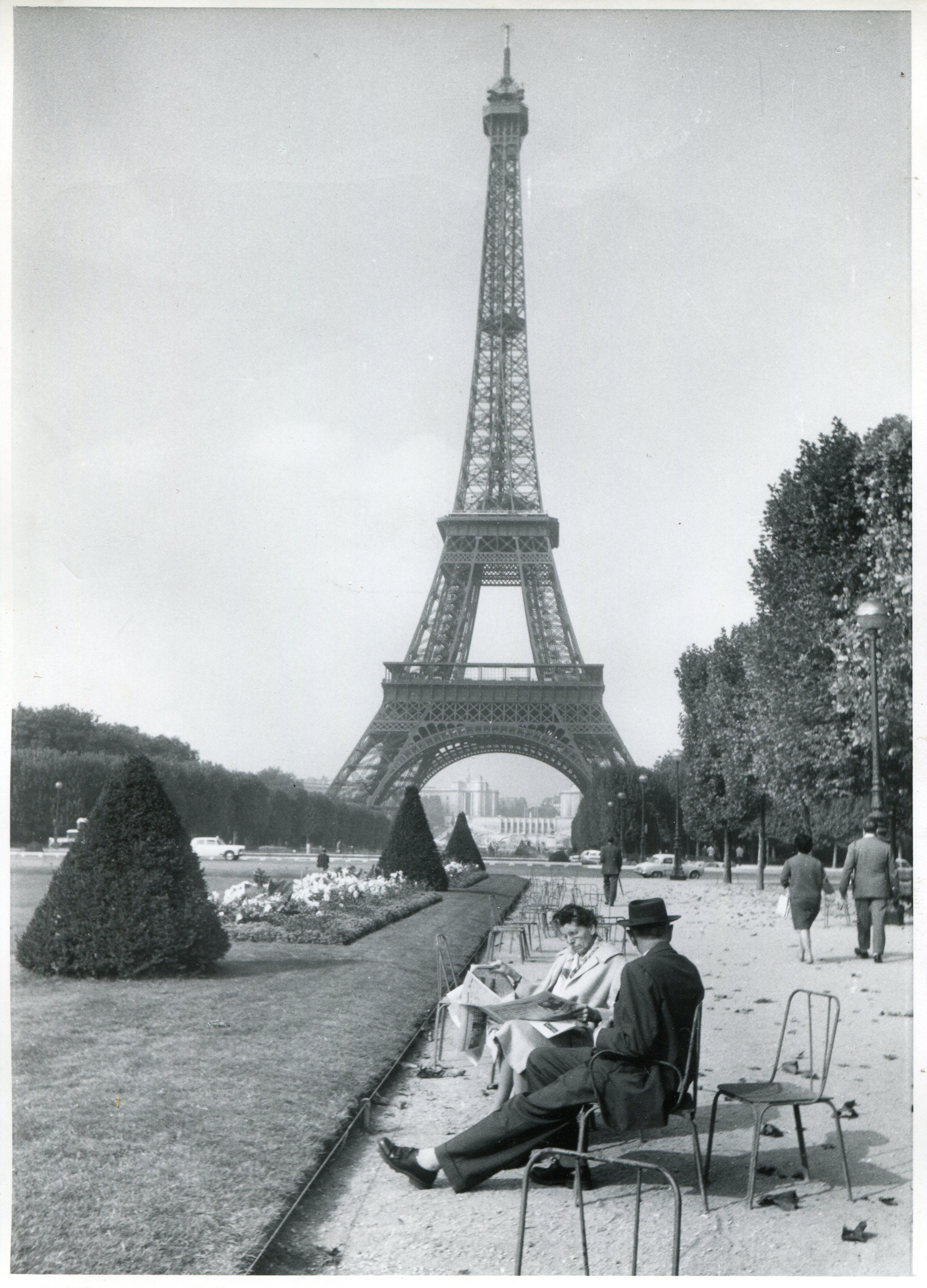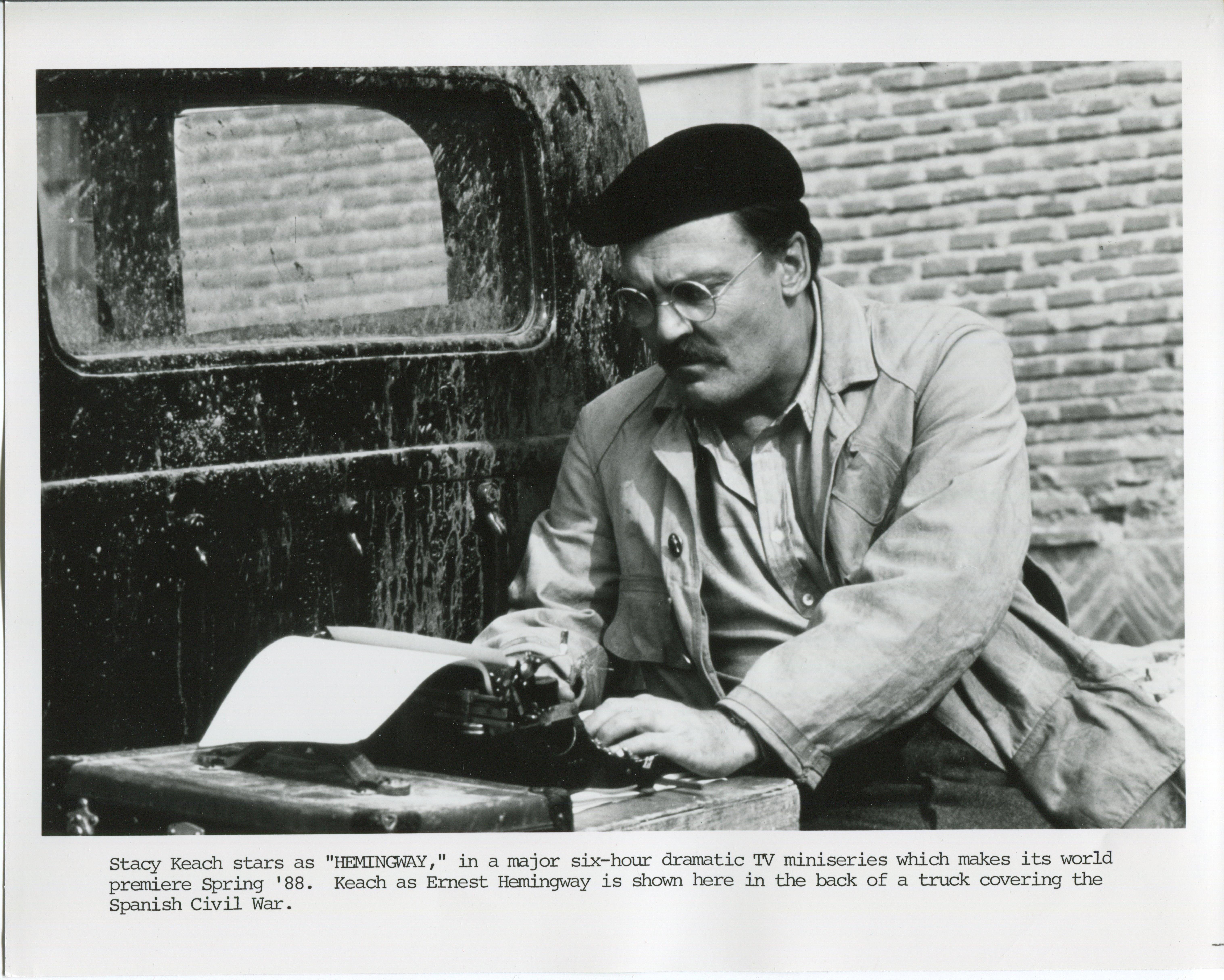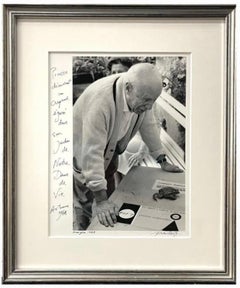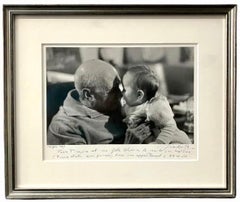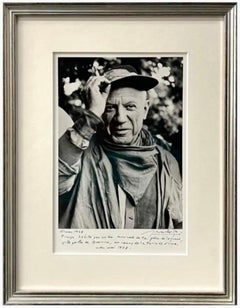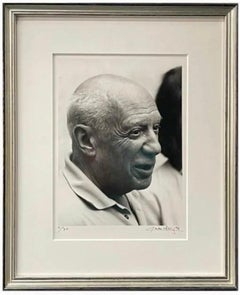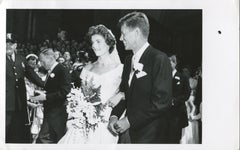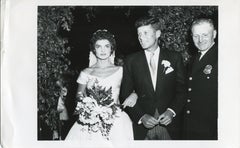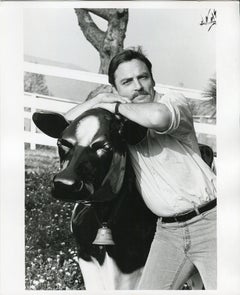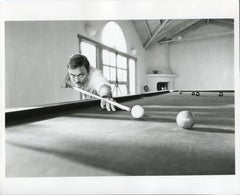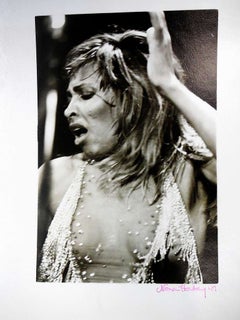
Vintage Signed Silver Gelatin Photo Tina Turner
View Similar Items
Want more images or videos?
Request additional images or videos from the seller
1 of 7
Nona HatayVintage Signed Silver Gelatin Photo Tina Turner1981
1981
About the Item
- Creator:Nona Hatay (1967, American)
- Creation Year:1981
- Dimensions:Height: 10 in (25.4 cm)Width: 8 in (20.32 cm)
- Medium:
- Movement & Style:
- Period:
- Condition:
- Gallery Location:Surfside, FL
- Reference Number:1stDibs: LU38210544632
About the Seller
4.9
Platinum Seller
Premium sellers with a 4.7+ rating and 24-hour response times
Established in 1995
1stDibs seller since 2014
1,768 sales on 1stDibs
Typical response time: 1 hour
Authenticity Guarantee
In the unlikely event there’s an issue with an item’s authenticity, contact us within 1 year for a full refund. DetailsMoney-Back Guarantee
If your item is not as described, is damaged in transit, or does not arrive, contact us within 7 days for a full refund. Details24-Hour Cancellation
You have a 24-hour grace period in which to reconsider your purchase, with no questions asked.Vetted Professional Sellers
Our world-class sellers must adhere to strict standards for service and quality, maintaining the integrity of our listings.Price-Match Guarantee
If you find that a seller listed the same item for a lower price elsewhere, we’ll match it.Trusted Global Delivery
Our best-in-class carrier network provides specialized shipping options worldwide, including custom delivery.More From This Seller
View AllSilver Gelatin Photograph Hand Signed Photo Pablo Picasso Profile Lucien Clergue
By Lucien Clergue
Located in Surfside, FL
Lucien Clergue (FRENCH, 1934 - 2014)
Gelatin silver photographic print depicting Pablo Picasso with a frog or turtle.
Mougins, 1968
Hand signed by the artist with hand written description. Titled and dated lower left.
Mounted in a silver painted wooden frame with mat behind acrylic screen.
Paper measures approx. 11 3/4" height x 9" width to sight. Framed measures approx. 17 1/4" height x 14 3/4" width.
Lucien Clergue (French: 1934 – 2014) was a French photographer. He was Chairman of the Academy of Fine Arts, Paris for 2013.
Lucien Clergue was born in Arles, France. At the age of 7 he began learning to play the violin, and after several years of study his teacher admitted that he had nothing more to teach him. Clergue was from a family of shopkeepers and could not afford to pursue further studies in a college or university school of music, such as a conservatory.
In 1949, he learned the basics of photography. Four years later, at a corrida in Arles, he showed his photographs to Spanish painter Pablo Picasso who, though subdued, asked to see more of his work. Within a year and a half, young Clergue worked on his photography with the goal of sending more images to Picasso. During this period, he worked on a series of photographs of travelling entertainers, acrobats and harlequins, the Saltimbanques. He also worked on a series whose subject was carrion. On 4 November 1955 Lucien Clergue visited Picasso in Cannes, France. Their friendship lasted nearly 30 years until Picasso's death. Clergue's autobiographical book, Picasso My Friend, looks back on important moments of their relationship.
In 1968, and with his friend Michel Tournier, Clergue founded the Rencontres d’Arles photography festival which is held annually in July in Arles. He exhibited his work at the festival during the years 1971–1973, 1975, 1979, 1982–1986, 1989, 1991, 1993, 1994, 2000, 2003 and 2007. Clergue also illustrated books, among them a book by writer Yves Navarre.
Clergue took many photographs of the gypsies of southern France, and was instrumental in propelling the guitarist Manitas de Plata to fame. Clergue is perhaps most remembered and respected for his black-and-white studies of light, shadow, and form, featuring sinuous nude female bodies, zebra stripes of light, dynamic sand dunes, and seascapes extracted from the coast of the Camargue. Clergue's photographs are in the collections of numerous well-known museums and private collectors. His vintage photographs have been exhibited in over 100 solo exhibitions worldwide, with noted exhibitions such as in 1961, at the Museum of Modern Art New York, the last exhibition organized by Edward Steichen with Lucien Clergue, Bill Brandt and Yasuhiro Ishimoto. Museums with large collections of his work include The Fogg Museum at Harvard University and the Museum of Fine Arts, Boston. His work, Fontaines du Grand Palais (Fountains of the Grand Palais), is in Museo cantonale d'arte [de] of Lugano. His vintage photographs of Jean Cocteau are on permanent display at the Jean Cocteau Museum in Menton, France. In the U.S., an exhibition of the Cocteau photographs was premiered at Westwood Gallery, New York City. In 2007, the city of Arles honored Lucien Clergue and dedicated a retrospective collection of 360 of his photographs dating from 1953 to 2007. He also received the 2007 Lucie Award.
He was named Knight of the Légion d'honneur in 2003 and elected member of the Academy of Fine Arts of the Institute of France on 31 May 2006, at the same time as a new section dedicated to photography was created. Clergue was the first photographer to enter the Academy to a position devoted specifically to photography.
He was Chairman of the Academy of Fine Arts for 2013.
Lucien Clergue was married to the art curator Yolande Clergue, founder of The Fondation Vincent van Gogh Arles. He was the father of two daughters: Anne Clergue, a curator of contemporary art who has worked at Leo Castelli Gallery, and Olivia Clergue, a handbag fashion designer whose godfather was Pablo Picasso.
Pablo Picasso (1881 –1973) was a Spanish painter, sculptor, printmaker, ceramic artist and theatre designer who spent most of his adult life in France. Regarded as one of the most influential artists of the 20th century, he is known for co-founding the Cubist movement, the invention of constructed sculpture, the co-invention of collage, and for the wide variety of styles that he helped develop and explore. Among his most famous works are the proto-Cubist Les Demoiselles d'Avignon (1907), and Guernica (1937), a dramatic portrayal of the bombing of Guernica by German and Italian air forces during the Spanish Civil War. After 1906, the Fauvist work of the slightly older artist Henri Matisse motivated Picasso to explore more radical styles, beginning a fruitful rivalry between the two artists, who subsequently were often paired by critics as the leaders of modern art. In 1897, his realism began to show a Symbolist influence, for example, in a series of landscape paintings...
Category
20th Century Modern Black and White Photography
Materials
Silver Gelatin
Silver Gelatin Photograph Hand Signed Photo Pablo Picasso w Baby Lucien Clergue
By Lucien Clergue
Located in Surfside, FL
Lucien Clergue (FRENCH, 1934 - 2014)
Gelatin silver photographic print depicting Pablo Picasso holding a baby.
Picasso et sa filleule Olivia (Picasso et bébé)
Mougins, 1967
Hand signed by the artist with hand written description. Titled and dated lower left.
Mounted in a silver painted wooden frame with mat behind acrylic screen.
Paper measures approx. 11 3/4" height x 9" width to sight. Framed measures approx. 17 1/4" height x 14 3/4" width.
Lucien Clergue (French: 1934 – 2014) was a French photographer. He was Chairman of the Academy of Fine Arts, Paris for 2013.
Lucien Clergue was born in Arles, France. At the age of 7 he began learning to play the violin, and after several years of study his teacher admitted that he had nothing more to teach him. Clergue was from a family of shopkeepers and could not afford to pursue further studies in a college or university school of music, such as a conservatory.
In 1949, he learned the basics of photography. Four years later, at a corrida in Arles, he showed his photographs to Spanish painter Pablo Picasso who, though subdued, asked to see more of his work. Within a year and a half, young Clergue worked on his photography with the goal of sending more images to Picasso. During this period, he worked on a series of photographs of travelling entertainers, acrobats and harlequins, the Saltimbanques. He also worked on a series whose subject was carrion. On 4 November 1955 Lucien Clergue visited Picasso in Cannes, France. Their friendship lasted nearly 30 years until Picasso's death. Clergue's autobiographical book, Picasso My Friend, looks back on important moments of their relationship.
In 1968, and with his friend Michel Tournier, Clergue founded the Rencontres d’Arles photography festival which is held annually in July in Arles. He exhibited his work at the festival during the years 1971–1973, 1975, 1979, 1982–1986, 1989, 1991, 1993, 1994, 2000, 2003 and 2007. Clergue also illustrated books, among them a book by writer Yves Navarre.
Clergue took many photographs of the gypsies of southern France, and was instrumental in propelling the guitarist Manitas de Plata to fame. Clergue is perhaps most remembered and respected for his black-and-white studies of light, shadow, and form, featuring sinuous nude female bodies, zebra stripes of light, dynamic sand dunes, and seascapes extracted from the coast of the Camargue. Clergue's photographs are in the collections of numerous well-known museums and private collectors. His vintage photographs have been exhibited in over 100 solo exhibitions worldwide, with noted exhibitions such as in 1961, at the Museum of Modern Art New York, the last exhibition organized by Edward Steichen with Lucien Clergue, Bill Brandt and Yasuhiro Ishimoto. Museums with large collections of his work include The Fogg Museum at Harvard University and the Museum of Fine Arts, Boston. His work, Fontaines du Grand Palais (Fountains of the Grand Palais), is in Museo cantonale d'arte [de] of Lugano. His vintage photographs of Jean Cocteau are on permanent display at the Jean Cocteau Museum in Menton, France. In the U.S., an exhibition of the Cocteau photographs was premiered at Westwood Gallery, New York City. In 2007, the city of Arles honored Lucien Clergue and dedicated a retrospective collection of 360 of his photographs dating from 1953 to 2007. He also received the 2007 Lucie Award.
He was named Knight of the Légion d'honneur in 2003 and elected member of the Academy of Fine Arts of the Institute of France on 31 May 2006, at the same time as a new section dedicated to photography was created. Clergue was the first photographer to enter the Academy to a position devoted specifically to photography.
He was Chairman of the Academy of Fine Arts for 2013.
Lucien Clergue was married to the art curator Yolande Clergue, founder of The Fondation Vincent van Gogh Arles. He was the father of two daughters: Anne Clergue, a curator of contemporary art who has worked at Leo Castelli Gallery, and Olivia Clergue, a handbag fashion designer whose godfather was Pablo Picasso.
Pablo Picasso (1881 –1973) was a Spanish painter, sculptor, printmaker, ceramic artist and theatre designer who spent most of his adult life in France. Regarded as one of the most influential artists of the 20th century, he is known for co-founding the Cubist movement, the invention of constructed sculpture, the co-invention of collage, and for the wide variety of styles that he helped develop and explore. Among his most famous works are the proto-Cubist Les Demoiselles d'Avignon (1907), and Guernica (1937), a dramatic portrayal of the bombing of Guernica by German and Italian air forces during the Spanish Civil War. After 1906, the Fauvist work of the slightly older artist Henri Matisse motivated Picasso to explore more radical styles, beginning a fruitful rivalry between the two artists, who subsequently were often paired by critics as the leaders of modern art. In 1897, his realism began to show a Symbolist influence, for example, in a series of landscape...
Category
20th Century Modern Black and White Photography
Materials
Silver Gelatin
Silver Gelatin Photograph Hand Signed Photo Pablo Picasso Feria Lucien Clergue
By Lucien Clergue
Located in Surfside, FL
Lucien Clergue (FRENCH, 1934 - 2014)
Gelatin silver photographic print depicting a portrait of a costumed Pablo Picasso.
During the Feria de Nîmes festival, Picasso dressed...
Category
20th Century Modern Black and White Photography
Materials
Silver Gelatin
Silver Gelatin Photograph Hand Signed Photo Pablo Picasso Arles Lucien Clergue
By Lucien Clergue
Located in Surfside, FL
Lucien Clergue (FRENCH, 1934 - 2014)
Gelatin silver photographic print depicting Pablo Picasso
Picasso Après la Corrida, Arles, 1962.
Hand signed by the artist and numbered 4/30 (edition of 30) to lower left in ink. Mounted in a silver painted wooden frame with mat behind acrylic screen. Paper measures approx. 10 1/2" height x 7 1/2" width to sight. Measures approx. 16" height x 13 1/4" width
Hand signed by the artist with hand written description. Titled and dated lower left.
Mounted in a silver painted wooden frame with mat behind acrylic screen.
Paper measures approx. 11 3/4" height x 9" width to sight. Framed measures approx. 17 1/4" height x 14 3/4" width.
Lucien Clergue (French: 1934 – 2014) was a French photographer. He was Chairman of the Academy of Fine Arts, Paris for 2013.
Lucien Clergue was born in Arles, France. At the age of 7 he began learning to play the violin, and after several years of study his teacher admitted that he had nothing more to teach him. Clergue was from a family of shopkeepers and could not afford to pursue further studies in a college or university school of music, such as a conservatory.
In 1949, he learned the basics of photography. Four years later, at a corrida in Arles, he showed his photographs to Spanish painter Pablo Picasso who, though subdued, asked to see more of his work. Within a year and a half, young Clergue worked on his photography with the goal of sending more images to Picasso. During this period, he worked on a series of photographs of travelling entertainers, acrobats and harlequins, the Saltimbanques. He also worked on a series whose subject was carrion. On 4 November 1955 Lucien Clergue visited Picasso in Cannes, France. Their friendship lasted nearly 30 years until Picasso's death. Clergue's autobiographical book, Picasso My Friend, looks back on important moments of their relationship.
In 1968, and with his friend Michel Tournier, Clergue founded the Rencontres d’Arles photography festival which is held annually in July in Arles. He exhibited his work at the festival during the years 1971–1973, 1975, 1979, 1982–1986, 1989, 1991, 1993, 1994, 2000, 2003 and 2007. Clergue also illustrated books, among them a book by writer Yves Navarre.
Clergue took many photographs of the gypsies of southern France, and was instrumental in propelling the guitarist Manitas de Plata to fame. Clergue is perhaps most remembered and respected for his black-and-white studies of light, shadow, and form, featuring sinuous nude female bodies, zebra stripes of light, dynamic sand dunes, and seascapes extracted from the coast of the Camargue. Clergue's photographs are in the collections of numerous well-known museums and private collectors. His vintage photographs have been exhibited in over 100 solo exhibitions worldwide, with noted exhibitions such as in 1961, at the Museum of Modern Art New York, the last exhibition organized by Edward Steichen with Lucien Clergue, Bill Brandt and Yasuhiro Ishimoto. Museums with large collections of his work include The Fogg Museum at Harvard University and the Museum of Fine Arts, Boston. His work, Fontaines du Grand Palais (Fountains of the Grand Palais), is in Museo cantonale d'arte [de] of Lugano. His vintage photographs of Jean Cocteau are on permanent display at the Jean Cocteau Museum in Menton, France. In the U.S., an exhibition of the Cocteau photographs was premiered at Westwood Gallery, New York City. In 2007, the city of Arles honored Lucien Clergue and dedicated a retrospective collection of 360 of his photographs dating from 1953 to 2007. He also received the 2007 Lucie Award.
He was named Knight of the Légion d'honneur in 2003 and elected member of the Academy of Fine Arts of the Institute of France on 31 May 2006, at the same time as a new section dedicated to photography was created. Clergue was the first photographer to enter the Academy to a position devoted specifically to photography.
He was Chairman of the Academy of Fine Arts for 2013.
Lucien Clergue was married to the art curator Yolande Clergue, founder of The Fondation Vincent van Gogh Arles. He was the father of two daughters: Anne Clergue, a curator of contemporary art who has worked at Leo Castelli Gallery, and Olivia Clergue, a handbag fashion designer whose godfather was Pablo Picasso.
Pablo Picasso (1881 –1973) was a Spanish painter, sculptor, printmaker, ceramic artist and theatre designer who spent most of his adult life in France. Regarded as one of the most influential artists of the 20th century, he is known for co-founding the Cubist movement, the invention of constructed sculpture, the co-invention of collage, and for the wide variety of styles that he helped develop and explore. Among his most famous works are the proto-Cubist Les Demoiselles d'Avignon (1907), and Guernica (1937), a dramatic portrayal of the bombing of Guernica by German and Italian air forces during the Spanish Civil War. After 1906, the Fauvist work of the slightly older artist Henri Matisse motivated Picasso to explore more radical styles, beginning a fruitful rivalry between the two artists, who subsequently were often paired by critics as the leaders of modern art. In 1897, his realism began to show a Symbolist influence, for example, in a series of landscape paintings rendered in non-naturalistic violet and green tones. What some call his Modernist period (1899–1900) followed. His exposure to the work of Rossetti, Steinlen, Toulouse-Lautrec and Edvard Munch, combined with his admiration for favourite old masters such as El Greco, led Picasso to a personal version of modernism in his works of this period. Picasso made his first trip to Paris, then the art capital of Europe, in 1900. There, he met his first Parisian friend, journalist and poet Max Jacob, who helped Picasso learn the language and its literature. Soon they shared an apartment; Max slept at night while Picasso slept during the day and worked at night. These were times of severe poverty, cold, and desperation. Much of his work was burned to keep the small room warm. In 1907, Picasso joined an art gallery that had recently been opened in Paris by Daniel-Henry Kahnweiler, a German art historian and art collector who became one of the premier French art dealers of the 20th century. He was among the first champions of Pablo Picasso, Georges Braque and the Cubism that they jointly developed. Kahnweiler promoted burgeoning artists such as André Derain, Kees van Dongen, Fernand Léger, Juan Gris, Maurice de Vlaminck and several others who had come from all over the globe to live and work in Montparnasse at the time. Towards the end of World War I, Picasso became involved with Serge Diaghilev's Ballets Russes. Among his friends during this period were Jean Cocteau, Jean Hugo, Juan Gris, and others. In the summer of 1918, Picasso married Olga Khokhlova, a ballerina with Sergei Diaghilev's troupe, for whom Picasso was designing a ballet, Erik Satie's Parade, in Rome; they spent their honeymoon near Biarritz in the villa of glamorous Chilean art...
Category
20th Century Modern Black and White Photography
Materials
Silver Gelatin
Vintage Magnum Silver gelatin photograph "George Balanchine" for LOOK Magazine
By Ernst Haas
Located in Surfside, FL
Framed Dimensions (inches): 14.5" x 16.5"
Ernst Haas (1921–1986) is acclaimed as one of the most celebrated and influential photographers of the 20th century and considered one of the pioneers of color photography. Haas was born in Vienna in 1921, and took up photography after the war. At the invitation of Robert Capa, Haas joined Magnum in 1949, developing close associations with Capa, Henri Cartier-Bresson, and Werner Bischof. His images were disseminated by magazines like Life and Vogue and, in 1962, were the subject of the first single-artist exhibition of color photography at New York's Museum of Modern Art. He served as president of the cooperative Magnum Photos, and his book The Creation (1971) was one of the most successful photography books ever, selling 350,000 copies.
A Poet’s Camera (1949), which combined poetry with metaphoric imagery by artists like Edward Weston, was particularly important to Haas's early development. Unsure of his career path, Haas realized that photography could provide both a means of support and a vehicle for communicating his ideas. He obtained his first camera in 1946, at the age of 25, trading a 20-pound block of margarine for a Rolleiflex on the Vienna black market.
In 1954 Robert Capa, Magnum's first president, was killed while on assignment covering the First Indochina War. That same year, Werner Bischof died in a car accident in the Andes. Following their deaths, Haas was elected to Magnum's board of directors and traveled to Indochina himself to cover the war. After the death of David “Chim” Seymour in Suez in 1959, Haas was named the fourth president of Magnum.
In 1962 the Museum of Modern Art in New York presented a ten-year survey of Haas's color photography. Haas had been included in Edward Steichen's exhibition The Family of Man, which premiered in 1955 and traveled to 38 countries.
In addition to editorial journalism and unit stills work, Haas was also highly regarded for advertising photography, contributing groundbreaking campaigns for Volkswagen automobiles and Marlboro...
Category
1960s Modern Black and White Photography
Materials
Silver Gelatin
Northwestern University, College of Arts, Chemistry
By Jacalyn Diane Kalmes
Located in Surfside, FL
Unique B&W Photo
by Photographer Jacalyn (Jackie) Diane Kalmes
from Northwestern University - College of Arts, Chemistry
Category
20th Century Modern Black and White Photography
Materials
Silver Gelatin
You May Also Like
Wedding John F. Kennedy & Jacqueline Kennedy - Official Press Photo
Located in Cologne, DE
John Fitzgerald Kennedy (May 29, 1917 – November 22, 1963), often referred to by his initials JFK, was an American politician who served as the 35th president of the United States fr...
Category
Mid-20th Century Modern Black and White Photography
Materials
Black and White, Silver Gelatin
Wedding John F. Kennedy & Jacqueline Kennedy - Official Press Photo
Located in Cologne, DE
John Fitzgerald Kennedy (May 29, 1917 – November 22, 1963), often referred to by his initials JFK, was an American politician who served as the 35th president of the United States fr...
Category
Mid-20th Century Modern Black and White Photography
Materials
Black and White, Silver Gelatin
Stacey Keach
By Nik Wheeler
Located in Cologne, DE
American Film Actor Stacy Keach at Home in Malibu
American actor and star of TV series Mike Hammer, Stacy Keach, at home he shares with with third wife Jil...
Category
1980s Modern Black and White Photography
Materials
Silver Gelatin
Stacey Keach
By Nik Wheeler
Located in Cologne, DE
American Film Actor Stacy Keach at Home in Malibu
American actor and star of TV series Mike Hammer, Stacy Keach, at home he shares with with third wife Jil...
Category
1980s Modern Black and White Photography
Materials
Silver Gelatin
Grandfather with child, Germany 1935
By Erich Andres
Located in Cologne, DE
Silver Gelatine Print from 1998, photo by Erich Andres, 1935,
Andres was born 1905 in Germany and passed away 1992. He started his career as a photographer in 1920. He was one of t...
Category
1960s Modern Black and White Photography
Materials
Silver Gelatin
Italy 1956 - Boy reading a newspaper
By Erich Andres
Located in Cologne, DE
Silver Gelatine Print from 1998, photo by Erich Andres, 1956,
Andres was born 1905 in Germany and passed away 1992. He started his career as a photographer in 1920. He was one of t...
Category
1950s Modern Black and White Photography
Materials
Silver Gelatin
